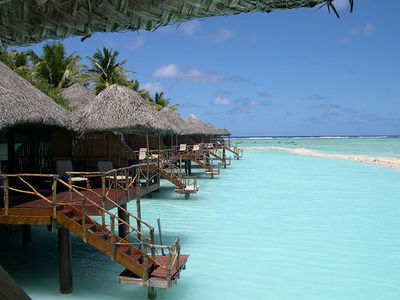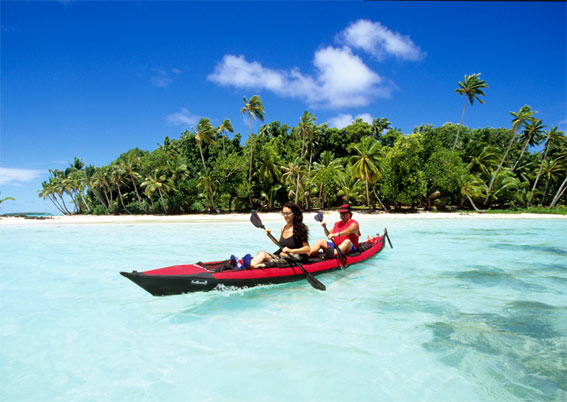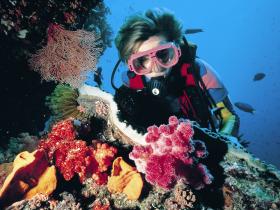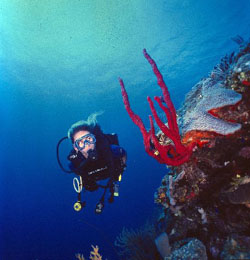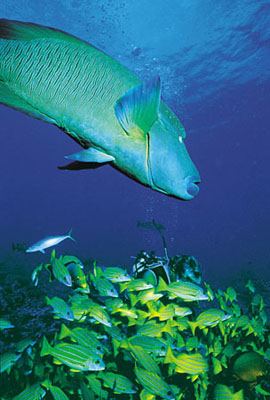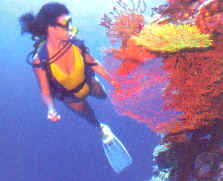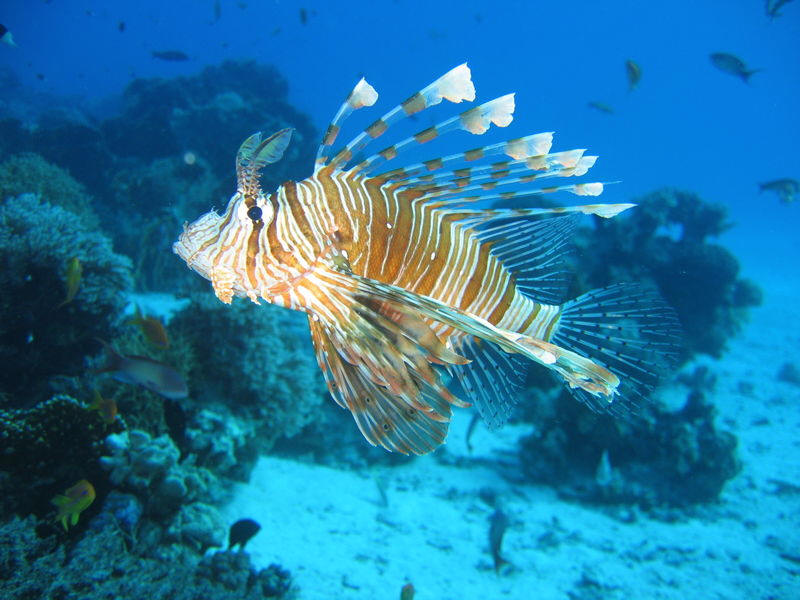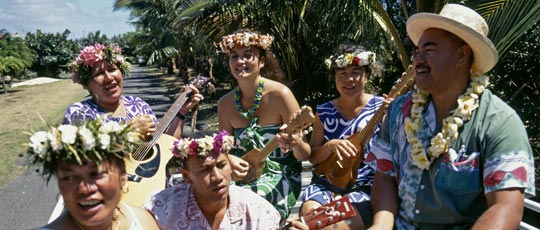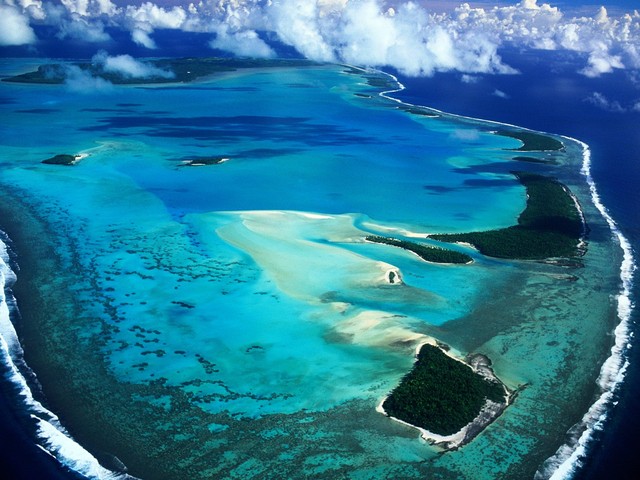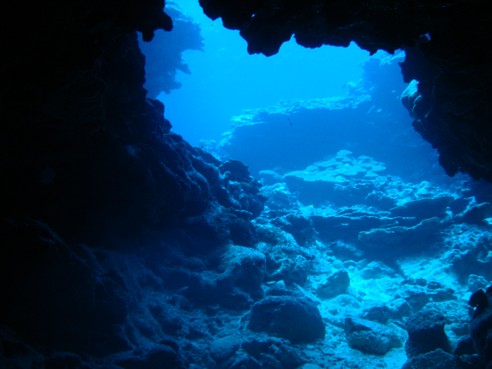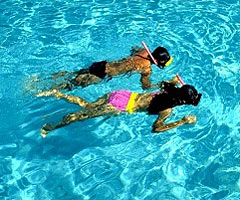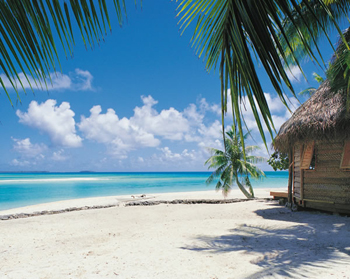
|
|
|
 |
||||||||||||||||||||||||||||||||||||
|
|
||||||||||||||||||||||||||||||||||||||
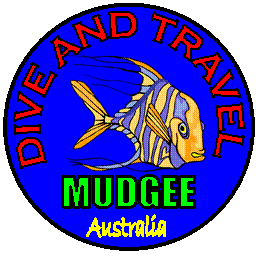 MUDGEE'S ONLY DIVE CENTRE MUDGEE'S ONLY DIVE CENTRE
Wafer-thin cays and far flung atolls, white-sand beaches and lush green volcanic mountains, a slow pace, friendly people, dancing - what's not to like about the Cook Islands? If that's not enough, they also have excellent hiking, snorkelling, diving, caving and lazing. Comprising 15 islands in the heart of the South Pacific spread over an area the size of Despite some 100,000 visitors a year to the capital island Rarotonga, the
DivingRarotonga
Information supplied and copright of Dive Rarotonga Click on the pic below to go to their website home page. The Sites: Rarotonga is home to some of the best and most diverse diving in the Pacific - there are about 40 dive sites around the island and, of these, there are 17 that are consistently better than the rest. We only dive the very BEST sites around Rarotonga - the ones we LOVE to dive! Listed below are some of these along with a brief description of each to whet the appetite!
MARITIME REEFER 24m - 30m: Advanced OW+
THE CAVES 6m - 16m: All
CROC CAVERNS 6m - 12m: Experienced divers only - 50 + dives
SAND RIVER 14m - 30m+: All
PARADISE 12m - 24m: All MATAVERA DROPOFF 16m - 30m+: All
EDNA's ANCHOR 12m - 30m+: All MATAORA 12m - 20m All
MUSHROOM FOREST 18m - 24m: Advanced OW+
PAPUA PASSAGE 8m - 22m: All
JADE REEF 16m - 26m: Advanced OW+
BERNIE'S REEF 18m - 30m: Advanced OW+ NGATANGIIA DROP OFF 18m - 30m: Advanced OW+
Aitutaki
Click on the map to go to Dive Aitutaki
Aitutaki Lagoon's spectacular fringe reef is an excellent diving area with walls, wrecks, caves, coral and an amazing variety of sea life in untouched conditions. Dive one of the most pristine places in the Pacific. The waters over the reefs of Aitutaki are abundant with marine life and their amazing clarity allows you to see so much more. The geological formation of Aitutaki provides divers with some fantastic wall and canyon dives. Travel Tips Currency:
Electrical Plugs: 240V 50Hz Same as Languages Spoken: Official: Maori, English Time Zones: GMT -10 Weather: Seasonal variations are slight in the Cook Islands, with temperatures ranging between 18°C and 28°C (64-82°F) in the winter months (May to October) and 21°C and 29°C (70-84°F) in the summer (November to April). The wet season is from December to March, when around 25cm (10in) of rain can fall each month; this is also the most likely time for cyclones, which are becoming more frequent due to warming seas across the South Pacific. The wet season is also the hottest and most humid time of the year - it can get quite sticky and uncomfortable, so bring along some cool, light clothes. The winter nights can sometimes be quite cool, even chilly, so if you're visiting at this time of year, a warm sweater or jacket will probably come in handy. You get a better rate for travellers' cheques than for cash, however there aren't many place you can change travellers' cheques or change cash - Avarua, Aitutaki and a few hotels. You're better off changing all your money on
Tipping: There's a value added tax of 12.5%. This is included in prices already. Tipping isn't a custom in the islands, and haggling over prices is considered extremely rude. Departure Tax: Adults NZ$30, This must be paid upon departure, and is not included as part of prepaid taxes with airline tickets. Departure tax can be purchased from the Westpac Bank at the International Terminal (Open for all International Flights), or at Westpac Bank in the main town Avarua. Health:
If medical evacuation is required to New Zealand or Australia, be aware that flights to these destinations are often heavily booked. Private or chartered evacuation is expensive.
There are no hyperbaric chambers on any of the islands for treatment of scuba diving related injuries. Serious cases of decompression sickness are evacuated to the nearest treatment centre in New Zealand. All registered dive companies carry basic treatment equipment to meet PADI standards. Outbreaks of the mosquito-borne illness dengue fever occur from time to time. We recommended you take precautions against being bitten by mosquitoes. Tap water in Rarotonga is safe to drink. Outside of Rarotonga it is recommended that all drinking water be boiled or that you drink bottled water.Visas: For those wanting to stay in the Water Temp: 23 - 30 degrees C |
|
|
|
|
MUDGEE DIVE & TRAVEL: THE PREMIER CHOICE FOR DISCERNING DIVERS AND TRAVELERS.
Site Design: Grant Willetts (MD&T)
Ph: 02 6372 1023; M: 0421 277 300; International: 61 2 6372 1023 ABN 98 124 932 154
All images, logos and trademarks are copyright of their respective owners. © Copyright 2005-2014. All Rights Reserved
Disclaimer: Data and information is provided for informational purposes only, and is not intended for any other commercial or non-commercial purposes. Neither us nor any of our data or content providers shall be liable for any errors or delays in the content, or for any actions taken in reliance thereon. By accessing our web site, a user agrees not to redistribute the information found therein. We provide customized links to select companies for your convenience only. We do not endorse or recommend the services of any company. The company you select is solely responsible for its services to you, the user. We shall not be liable for any damages or costs of any type arising out of or in any way connected with your use of our services.
| Site Map |
